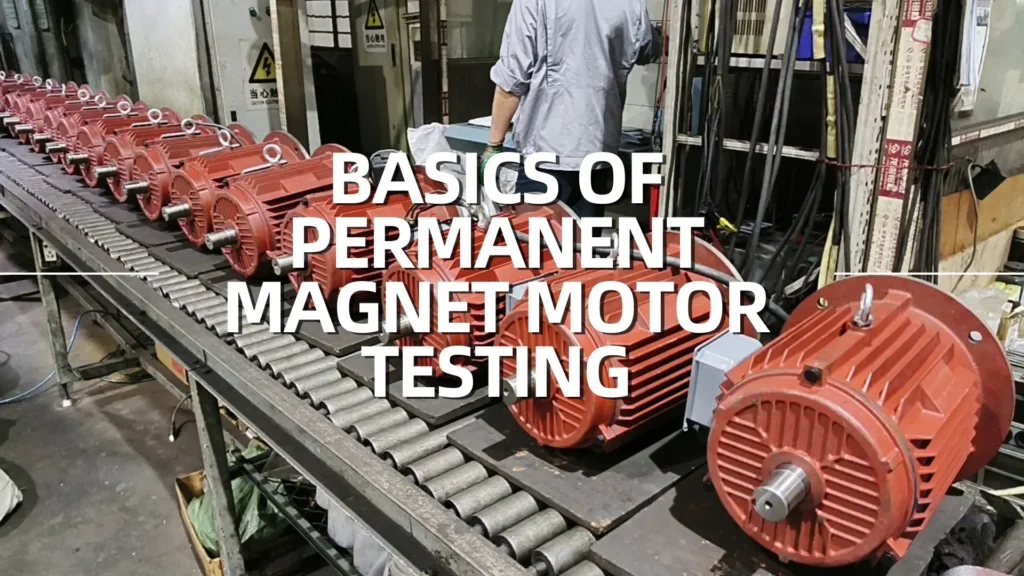Permanent magnet motors (PMMs) are critical components in many high-performance applications, from electric vehicles to industrial machinery.
Their efficiency, compact design, and precise control make them indispensable in modern technology.
However, like any mechanical system, PMMs are susceptible to wear and tear, which can lead to costly downtime and repairs.
Preventive testing is essential to ensure these motors operate at peak performance and avoid unexpected failures.
This article explains the basics of permanent magnet motor testing, covering both electrical and mechanical tests, and highlights their importance in maintaining motor health.
And More:
- Steps for Permanent Magnet Synchronous Motors
- Support and Maintenance for High-Efficiency Permanent Magnet Motors from China
- Rare Earth Permanent Magnet Motor Supplier in China
What is Permanent Magnet Motor Testing?
Definition
Permanent magnet motor testing involves assessing the integrity of a motor to prevent failures and ensure safe and efficient operation.
This process encompasses a range of evaluations aimed at both electrical and mechanical components of the motor.
By regularly conducting these tests, operators can identify potential issues early, thus mitigating risks and ensuring that the motor continues to function within its design parameters.
This proactive approach is vital for maintaining the reliability of PMMs in critical applications.
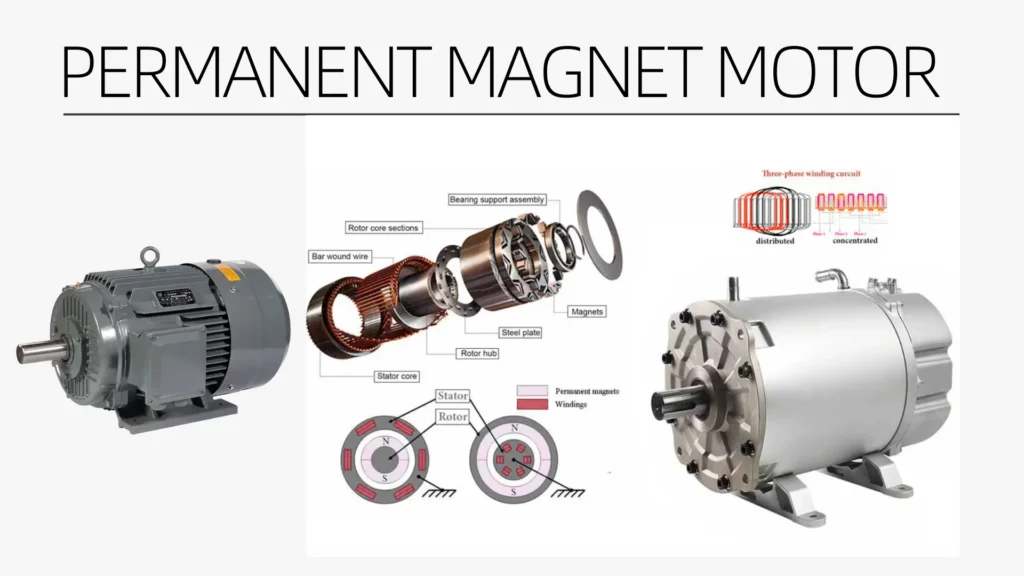
Scope of Testing
Testing focuses on key parameters such as:
Electrical Properties
This includes measuring insulation quality, current leakage, and the strength of the magnetic field.
Evaluating these parameters is crucial because they directly affect the motor’s performance, efficiency, and safety.
For instance, poor insulation can lead to short circuits or overheating, while insufficient magnetic field strength can reduce torque output.
Mechanical Integrity
This involves assessing the rotor condition, magnet alignment, and overall balance of the motor.
Mechanical integrity is vital for ensuring smooth operation and preventing excessive wear.
An imbalanced rotor, for example, can lead to vibrations that may damage other components over time.
Applicability
These tests apply to various types of PMMs, including surface-mounted, interior, axial flux, and radial flux designs.
Each type may require specific testing methods tailored to its construction and application.
For example, axial flux motors might need different magnetic field assessments compared to radial flux motors.
Understanding the specific requirements of each motor type ensures that the testing process is thorough and effective.
Why Test My Permanent Magnet Motor?
Irreversible Damage
Damage to permanent magnets or rotor components can significantly reduce motor performance and is often irreversible.
For instance, if a magnet becomes demagnetized due to overheating or excessive mechanical stress, it may not regain its original properties.
Regular testing helps detect these problems early, allowing for timely interventions that can prevent irreversible damage.
By identifying issues such as heat buildup or mechanical stress before they escalate, operators can avoid costly repairs and extend the motor’s lifespan.

Cost Savings
While testing requires an initial investment, it reduces failure rates, improves energy efficiency, and enhances safety.
The long-term benefits of regular testing far outweigh the costs associated with it.
By identifying potential issues early, companies can avoid unexpected breakdowns, which often lead to expensive repairs and lost production time.
Additionally, motors that operate efficiently consume less energy, resulting in lower operational costs.
This makes regular testing not just a maintenance practice, but a smart financial strategy.
Professional Services
Expert testing services provide accurate diagnostics, simplifying the process for users and ensuring reliable results.
Professionals employ advanced tools and techniques to deliver comprehensive assessments, which means users can trust that their motors are fully evaluated.
This expertise is crucial for identifying subtle issues that may not be apparent through basic inspections.
Moreover, professional services often offer insights and recommendations for improvements, helping organizations optimize their motor performance
Types of Permanent Magnet Motor Tests
Electrical Tests
Electrical tests focus on current, resistance, insulation properties, and magnetic field strength.
These tests ensure the motor’s electrical components are functioning correctly and safely.
Proper electrical performance is essential for the overall efficiency and reliability of the motor.
Electrical issues can lead to overheating, inefficiencies, and even catastrophic failures if not addressed promptly.
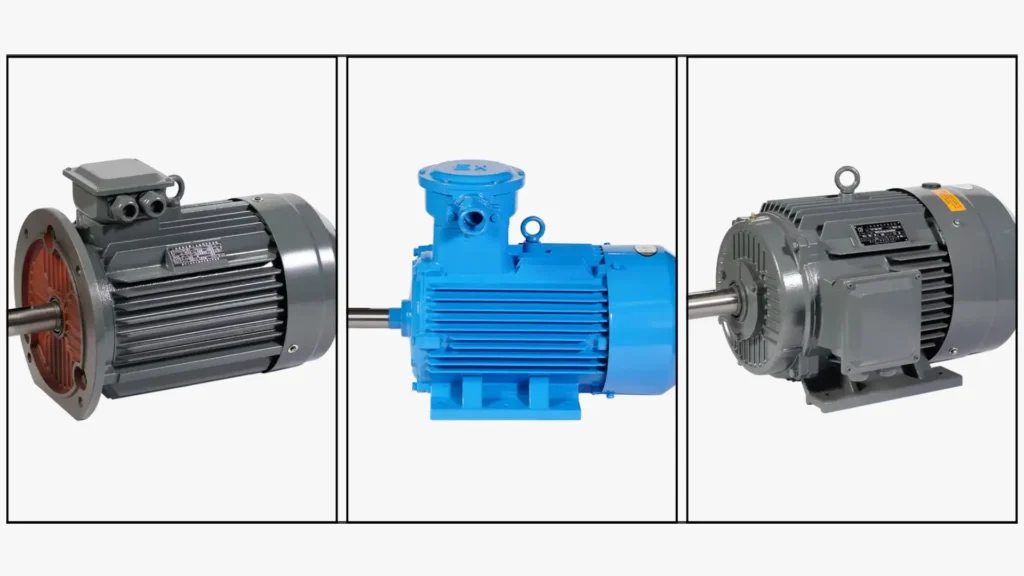
Mechanical Tests
Mechanical tests detect rotor damage, magnet misalignment, and imbalances.
These tests are crucial for maintaining the motor’s structural integrity and performance.
A well-balanced motor reduces wear and tear on components, prolonging its lifespan and ensuring consistent performance.
Mechanical issues can also lead to safety hazards, making these tests a critical aspect of motor maintenance.
Comprehensive Approach
Multiple tests are often used together to provide a complete assessment of motor health.
Combining electrical and mechanical tests ensures that no potential issue is overlooked, allowing for a thorough understanding of the motor’s condition.
This holistic approach enables operators to address both electrical and mechanical aspects simultaneously, ensuring a well-rounded maintenance strategy.
Electrical Tests for Permanent Magnet Motors
Insulation Resistance Test
Purpose
Measures insulation quality to detect shorts, loose connections, or open circuits in the motor windings.
Poor insulation can lead to electrical failures and safety hazards.
Tools
A Megger (insulation resistance tester) applies DC voltage to identify leakage paths, ensuring that the insulation can withstand operational conditions.
Accurate insulation measurements prevent costly failures caused by insulation breakdown.
Standards
IEEE Std. 43-2013 provides guidelines for test voltages based on motor operating voltage, ensuring consistent and reliable testing practices.
Adhering to these standards enhances the reliability of test results.

Polarization Index Test
Purpose
Assesses insulation health by measuring current changes over time, identifying contamination or physical changes in the insulation that could compromise performance.
Process
Conductors are charged, and current reduction is monitored to evaluate insulation condition.
A significant reduction in current indicates potential insulation degradation, prompting further investigation or maintenance.
Step Voltage Test
Purpose
Evaluates ground wall insulation’s ability to handle voltage spikes, ensuring reliability during operation.
This test helps ensure that the motor can withstand electrical transients, which are common in operational environments.
Process
DC voltage is applied in steps, and leakage current is plotted to detect insulation weaknesses.
This method provides a clear picture of insulation health under stress, helping identify potential failure points
Surge Test
Purpose
Identifies weaknesses in turn-to-turn insulation, a common failure point in motors.
This test is critical for preventing short circuits that could lead to catastrophic failures.
Process
Voltage pulses are applied, and waveform patterns are analyzed to detect insulation issues.
By identifying weaknesses at this level, preventative measures can be taken to enhance motor reliability.

Magnetic Field Strength Test
Purpose
Measures the strength and uniformity of the magnetic field generated by the permanent magnets.
A strong magnetic field is essential for optimal motor performance.
Tools
Gauss meters or magnetometers are used to assess magnet performance, providing insights into whether the motor operates at optimal efficiency and torque output.
This test helps ensure that the motor meets performance specifications.
Mechanical Tests for Permanent Magnet Motors
Rotor Integrity Test
Purpose
Detects cracks, misalignment, or damage in the rotor, which can affect motor performance.
A compromised rotor can lead to vibrations and increased wear.
Tools
Visual inspection, ultrasonic testing, or thermal imaging are used to identify potential issues in the rotor structure.
Early detection can prevent further damage and ensure the rotor operates efficiently.
Magnet Alignment Test
Purpose
Ensures permanent magnets are properly aligned and securely attached to the rotor.
Misalignment can lead to inefficiencies and mechanical failures.
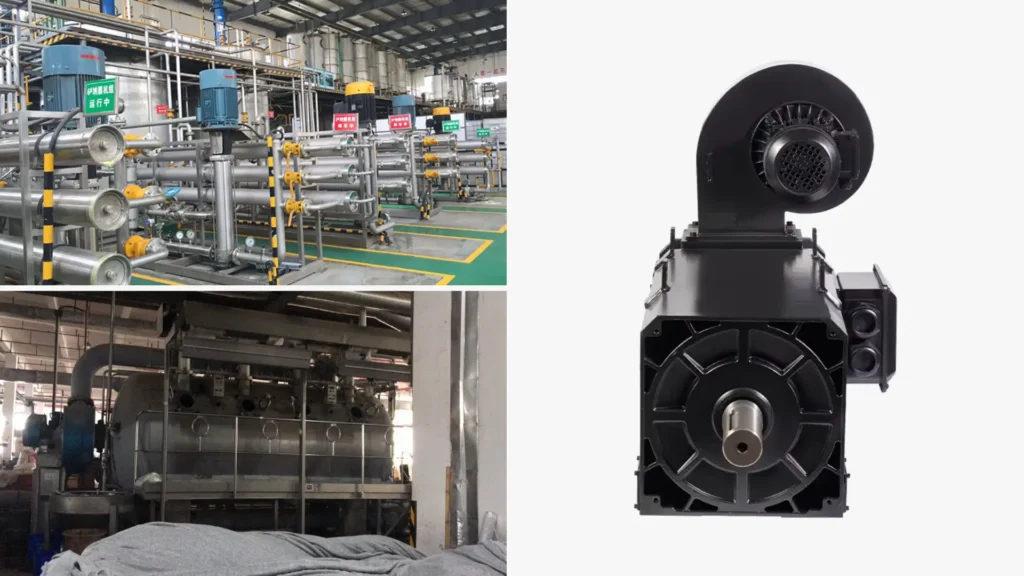
Process
Laser alignment tools or magnetic field mapping techniques are employed to verify magnet positioning, ensuring optimal performance and efficiency.
Proper alignment is crucial for maximizing torque and minimizing losses.
Vibration Spectrum Analysis
Purpose
Identifies imbalances or mechanical issues in the rotor by analyzing vibration frequencies.
This analysis helps in diagnosing potential mechanical failures
Process
Fast Fourier Transform (FFT) analysis splits vibrations into component frequencies to detect abnormalities.
By identifying unusual vibration patterns, maintenance can be scheduled proactively to address potential issues.
High Current Rotor Test
Purpose
Highlights shorted laminations or uneven heating in the rotor by applying high current and using thermal imaging to identify hot spots.
Process
Hot spots on thermal scans indicate potential rotor damage, allowing for timely repairs that can prevent more extensive failures.
This test is crucial for ensuring the rotor operates safely and effectively under load.
Where Can I Source Permanent Magnet Motors?
Supplier Platforms
The Shaoxing Jiayu Import and Export Co., Ltd. is a reliable supplier of permanent magnet motors, offering a diverse range of options tailored to meet specific application needs. As a key player in the industry, we provide valuable resources for procurement through our extensive catalog of over 1,000 specifications.
Recommendations
For optimal quality and reliability, consider utilizing professional services for motor testing and sourcing. Our commitment to high efficiency and energy savings means that our motors not only enhance overall performance but also meet operational requirements effectively. Trust in our guaranteed product quality, backed by rigorous testing and CE certification, to ensure you find the perfect motor for your applications.
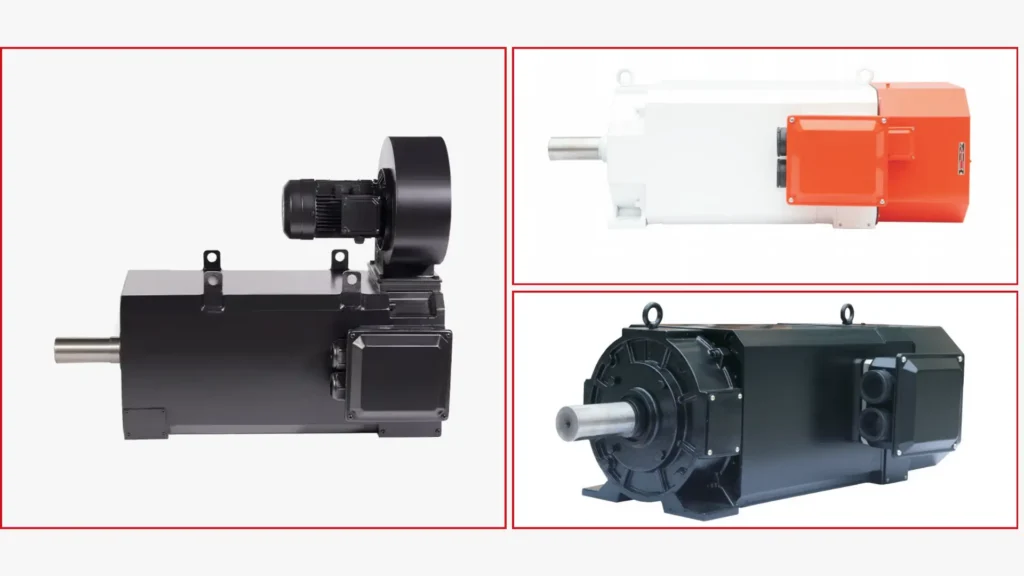
Summary
Permanent magnet motor testing is essential for preventing failures, optimizing performance, and ensuring safety.
Regular testing helps detect issues early, reducing the risk of costly repairs and downtime.
By prioritizing motor health, organizations can maintain operational efficiency and reliability.
Expert services provide accurate diagnostics and comprehensive assessments, ensuring your PMMs operate at peak efficiency.
Regular professional testing can extend the lifespan of your motors and enhance reliability, allowing for smoother operations in critical applications.
Regularly test your permanent magnet motors and consult reliable suppliers to maintain operational efficiency and longevity.
By investing in preventive testing, you can extend the lifespan of your motors and maximize their performance, ensuring they meet the demands of modern applications.
Prioritizing maintenance and testing not only safeguards your investment but also enhances the overall productivity of your operations.

